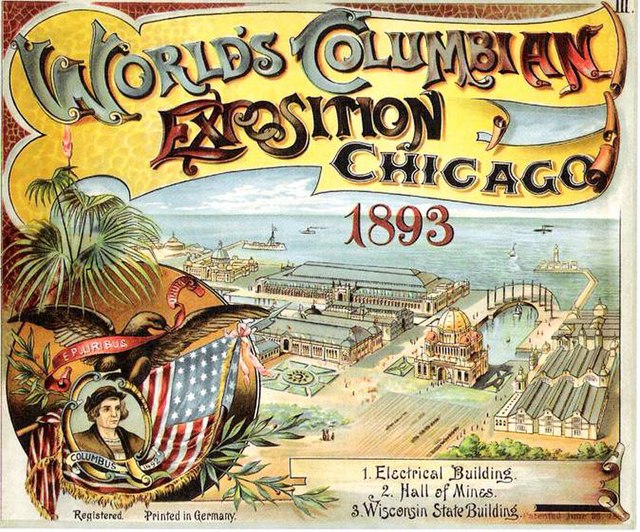World's Columbian Exposition
The World's Columbian Exposition, also known as the Chicago World's Fair, was a world's fair held in Chicago from May 5 to October 31, 1893, to celebrate the 400th anniversary of Christopher Columbus's arrival in the New World in 1492. The centerpiece of the Fair, held in Jackson Park, was a large water pool representing the voyage that Columbus took to the New World. Chicago won the right to host the fair over several competing cities, including New York City, Washington, D.C., and St. Louis. The exposition was an influential social and cultural event and had a profound effect on American architecture, the arts, American industrial optimism, and Chicago's image.
Chicago World's Columbian Exposition and The Republic statue and administration building in 1893
An advertisement for the Exposition, depicting a portrait of Christopher Columbus
Thomas Moran – Chicago World's Fair – Brooklyn Museum painting of the Administration Building
An aerial view of the exposition at Jackson Park in a print by F.A. Brockhaus
A world's fair, also known as a universal exhibition or an expo, is a large global exhibition designed to showcase the achievements of nations. These exhibitions vary in character and are held in different parts of the world at a specific site for a period of time, typically between three and six months.
Poster advertising the Brussels International Exposition in 1897
Replica of the Gokstad Viking ship at the 1893 Chicago World's Fair
International Exhibition of Modern Decorative and Industrial Arts in Paris, France in 1925. Autochrome Lumière showing Polish pavilion.
Palace of the railways and great connections at the International Exhibition of Hydropower and Tourism in Grenoble, France in 1925








